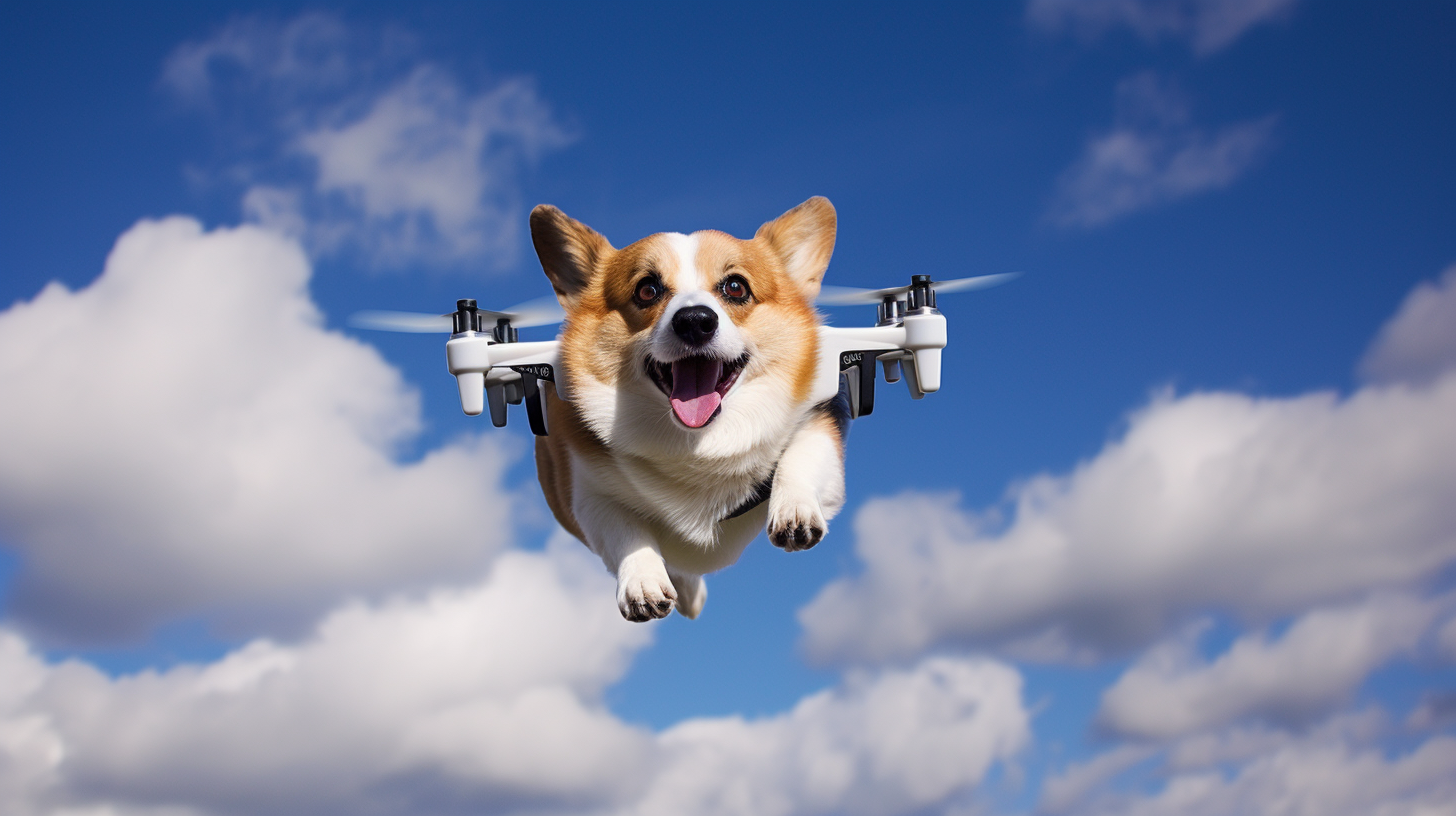In the dynamic skies of the Canine Republic, the debate around the use of doggie drones has reached new heights this past week – sparking a fervent discussion on finding the sweet spot between security and privacy. As our four-legged citizens go about their daily trots, airborne eyes have become a ubiquitous presence, supposedly safeguarding our public spaces and private kennels alike. Yet, a growing unease has taken root, sowing seeds of discord on what these mechanical tail-waggers mean for the individual’s right to roam snout-unwatched.
Let’s unleash the contention surrounding these contentious creatures of the cloud. On the one paw, proponents woof in favor of the drone presence, pointing to the added layer of security they provide. Senior Barkmaster Shepherdo has even suggested that drones could be beneficial in tracking the illusive ‘cat burglar’ phenomenon, where stealthy felines have been flummoxing the canine police force with incredible escape shenanigans.
‘With doggie drones, we’re not barking up the wrong tree,’ proclaims Shepherdo, ‘Imagine the tails we could catch if we just had that bird’s eye view. It’s about prevention more than snooping.’ In light of this, enthusiasts envisage a potential reduction in crime, with drones playing a critical role in the Canine Republic’s ‘See Something, Sniff Something’ initiative.
However, not all tails are wagging at the prospect. A coalition of privacy advocates, led by the concerned Poodle Privacy League (PPL), has raised their voices in a howl of protest. They argue that canine rights to a private life are being swept away faster than a lost ball in the park. Lady Fluffington, chairdog of the PPL, states emphatically, ‘Our homes are our dens, and these buzzing busybodies are an unwelcome intrusion. They bring a leash of surveillance that very soon could turn into a choke chain on our civil liberties.’
Meanwhile, winged citizens of our republic – the bird coalition – chirp in with their own grievances. They claim the canopy of drones interferes not only with daily flyabouts but poses a risk to the intricate air routes that our feathered-friends rely on. Mr. Tweeters, a representative of the Avian Avenue Association, put it bluntly, ‘It’s not just about the fluff on the ground. Our skies are claw-clogged as is, and these machines are ruffling feathers in every sense.’
It’s not just on the ground or in the air that the effects of these doggie drones are felt, but in the very fiber of our dog-eat-dog culture. There’s a growing concern over whether these drones could potentially automate tasks that have been historically reserved for the keen noses and sharp eyes of our canine kin. Could drone-assisted policing make the revered Beagle Detective Brigade obsolete? Or might these canine copters replace the golden retrievers in search and rescue squads?
Here sits the bone of contention: at what point does innovation bark over the soulful tunes of tradition and community? Tail-wagging technology has always been an integral part of our society but balancing the new with the respected customs of our past is crucial. The upcoming session of the High Howling Council promises to take these debates into account as it sits to debate and dictate drone policy.
Until then, we’re left to ponder and paw at the issues at stake. Do the benefits of increased safety and potential crime reduction outweigh the ominous overhang of privacy erosion and societal upheaval? Like a pup chasing its tail, the matter seems to spin in circles, but it’s one we can’t afford to let lie.
One thing is clear, dear readers. The conundrum of canine surveillance warrants more than a cursory sniff. It demands a deep dive into what kind of society we want to shape for the generations to come – a reflection, perhaps, often mirrored by those on two legs, in a not-so-dissimilar world.
